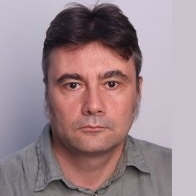Data Fusion, Integration and Advances of Non-destructive Testing Methods in Engineering and Geosciences
A special issue of Remote Sensing (ISSN 2072-4292). This special issue belongs to the section "Engineering Remote Sensing".
Deadline for manuscript submissions: closed (1 April 2021) | Viewed by 55468
Special Issue Editors
Interests: electromagnetic scattering; radar imaging; ground penetrating radar; data integration; non-invasive monitoring tools
Special Issues, Collections and Topics in MDPI journals
2. The Faringdon Centre for Non-Destructive Testing and Remote Sensing, University of West London, Room BY.GF.015, St. Mary’s Rd., Ealing, London W5 5RF, UK
Interests: ground-penetrating radar; signal processing; remote sensing; deflection-based methods; numerical simulations; forestry engineering; airfield and highway pavement engineering; construction materials; civil engineering
Special Issues, Collections and Topics in MDPI journals
Interests: ground-penetrating radar; signal processing; remote sensing; deflection-based assessment methods; non-destructive testing; modeling and simulation; road safety and highway engineering; driving simulation; civil engineering
Special Issues, Collections and Topics in MDPI journals
Interests: signal processing; non-invasive electromagnetic diagnostics; airborne and in situ radar imaging; reconstruction of geometrical and electromagnetic features of targets by means of microwave and terahertz devices; development of data processing strategies and methodologies; image interpretation; non-invasive subsurface radar surveys of cultural heritage assets
Special Issues, Collections and Topics in MDPI journals
Interests: ground-penetrating radar; signal processing; modelling and simulation; remote sensing; non-destructive testing; concrete technology; forestry engineering; soil engineering; civil engineering
Special Issues, Collections and Topics in MDPI journals
Special Issue Information
Dear Colleagues,
Non-destructive testing (NDT) methods have been increasingly used over the last decades in a wide range of engineering and geosciences applications. The potential of many optical, acoustic, electric and electromagnetic NDT methods for stand-alone use has been widely investigated, and their use has become established in many fields of application. In addition to this, equipment reliability has tremendously grown and benefitted from new theoretical developments, technological advances in both hardware and software resources, as well as from the progress achieved in surveying, data processing and interpretation. These achievements have eventually allowed outstanding data quality and accuracy.
Nevertheless, comprehensive site investigations may require multiple expertise and equipment and involve complex and time-consuming methods and resources. To this effect, the integration between data outputs and different physical quantities, scale domains and resolutions is gaining momentum nowadays. In more detail, it is envisaged that data fusion, integration and correlation between different NDT methods and theories are to be further investigated in the near future with enormous development opportunities.
Within this framework, our intention is to collect contributions from state-of-the-art NDT methods and numerical and theoretical developments. The emphasis will be on promoting the integration of existing equipment and the development of new algorithms, surveying techniques, methods and prototypes for effective monitoring and assessment of survey sites. Non-destructive testing techniques of interest are related but not limited to the application of acoustic emission (AE) testing, electromagnetic testing (ET), ground-penetrating radar (GPR), geoelectric methods (GM), laser testing methods (LM), magnetic flux leakage (MFL), microwave testing, magnetic particle testing (MT), neutron radiographic testing (NR), radiographic testing (RT), thermal/infrared testing (IRT), ultrasonic testing (UT), seismic methods (SM), vibration analysis (VA), visual and optical testing (VT/OT).
This Special Issue will include, but not be limited to, the following set of topics:
- advanced data fusion;
- advanced interpretation methods;
- design and development of new surveying equipment and prototypes;
- assessment and monitoring methods for engineering and geoscience investigations;
- assessment and monitoring protocols and procedures for engineering and geoscience investigations;
- comprehensive and inclusive information data systems for the monitoring and assessment of survey sites;
- numerical simulation and modelling of data outputs with different physical quantities, scale domains and resolutions;
- advances in NDT methods, numerical developments and applications in engineering and geosciences (stand-alone use of existing and state-of-the-art NDTs).
Prof. Andrea Benedetto
Dr. Ilaria Catapano
Prof. Amir M. Alani
Dr. Francesco Soldovieri
Dr. Fabio Tosti
Guest Editors
Manuscript Submission Information
Manuscripts should be submitted online at www.mdpi.com by registering and logging in to this website. Once you are registered, click here to go to the submission form. Manuscripts can be submitted until the deadline. All submissions that pass pre-check are peer-reviewed. Accepted papers will be published continuously in the journal (as soon as accepted) and will be listed together on the special issue website. Research articles, review articles as well as short communications are invited. For planned papers, a title and short abstract (about 100 words) can be sent to the Editorial Office for announcement on this website.
Submitted manuscripts should not have been published previously, nor be under consideration for publication elsewhere (except conference proceedings papers). All manuscripts are thoroughly refereed through a single-blind peer-review process. A guide for authors and other relevant information for submission of manuscripts is available on the Instructions for Authors page. Remote Sensing is an international peer-reviewed open access semimonthly journal published by MDPI.
Please visit the Instructions for Authors page before submitting a manuscript. The Article Processing Charge (APC) for publication in this open access journal is 2700 CHF (Swiss Francs). Submitted papers should be well formatted and use good English. Authors may use MDPI's English editing service prior to publication or during author revisions.









